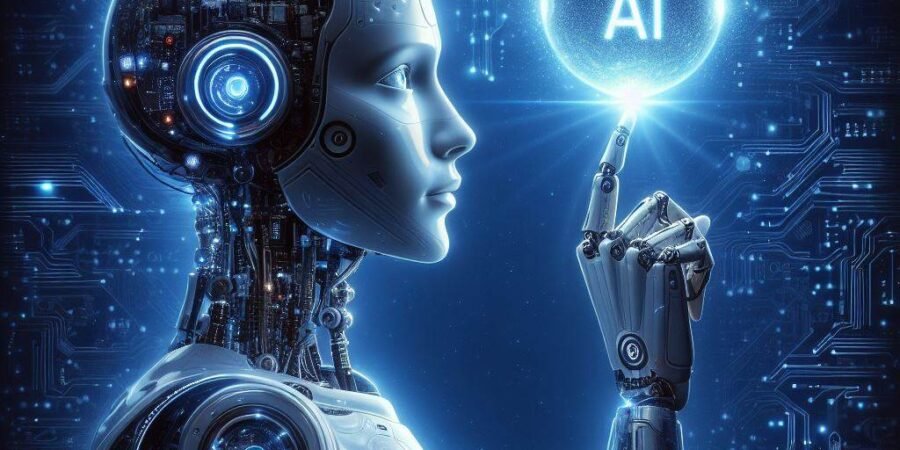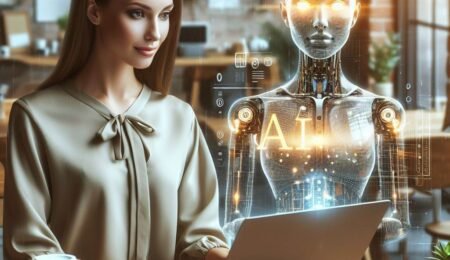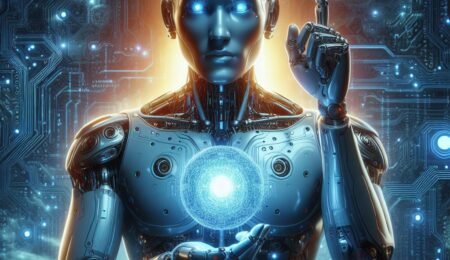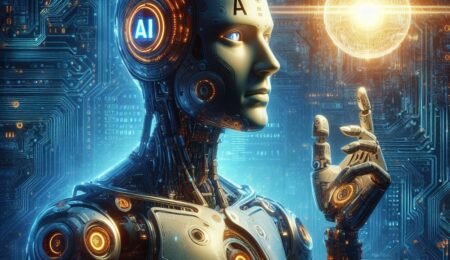Artificial intelligence (AI) is one of the most popular and exciting topics in the world today. But what exactly is AI and how does it work? In this blog post, I will explain the basic concepts of AI, its applications, benefits, and challenges, and how you can learn more about this fascinating field.
Table of Contents
What is Artificial Intelligence (AI)?
AI is the ability of machines or computer systems to perform tasks that normally require human intelligence, such as understanding language, recognizing images, making decisions, and solving problems.
AI is not a single technology, but a broad field that encompasses many subfields and techniques, such as machine learning, deep learning, natural language processing, computer vision, speech recognition, and more.
AI can be classified into two main types: Narrow AI and General AI.
Narrow AI is the type of AI that we use today, which is designed to perform specific tasks or solve specific problems, such as recommending products, detecting spam, or playing chess.
General AI, on the other hand, is the type of AI that we see in science fiction, which is capable of understanding and learning from any kind of data, and performing any kind of task that a human can do, such as reasoning, creativity, and common sense. General AI is still a long-term goal that has not been achieved yet.
How does Artificial Intelligence (AI) work?
AI works by using algorithms, which are sets of rules or instructions that tell a machine or computer system how to perform a task or solve a problem. AI algorithms can be programmed by humans, or they can be learned by machines themselves from data, using techniques such as machine learning and deep learning.
(a). Machine learning
Machine learning is the process of teaching machines to learn from data, without explicitly programming them. Machine learning algorithms can find patterns, make predictions, and improve their performance based on feedback or new data.
Machine learning can be divided into three main types: supervised learning, unsupervised learning, and reinforcement learning.
- Supervised learning is when the machine learns from labeled data, which means that the data has the correct answers or outcomes for the task. For example, if the task is to classify images of animals, the data would have labels such as “cat”, “dog”, or “bird”. The machine learns to map the input data (images) to the output data (labels) by finding the best function or model that fits the data. Supervised learning can be used for tasks such as regression, classification, and sentiment analysis.
- Unsupervised learning is when the machine learns from unlabeled data, which means that the data does not have the correct answers or outcomes for the task. For example, if the task is to cluster images of animals, the data would not have labels such as “cat”, “dog”, or “bird”. The machine learns to find the hidden structure or patterns in the data by grouping similar data points together. Unsupervised learning can be used for tasks such as clustering, dimensionality reduction, and anomaly detection.
- Reinforcement learning is when the machine learns from its own actions and experiences, without any human guidance or feedback. For example, if the task is to play a video game, the machine would not have any data or labels to learn from. The machine learns by interacting with the environment, taking actions, and receiving rewards or penalties based on the outcomes. The machine learns to maximize the total reward or minimize the total penalty by finding the best policy or strategy that guides its actions. Reinforcement learning can be used for tasks such as gaming, robotics, and self-driving cars.
(b). Deep Learning
Deep learning is a subset of machine learning that uses artificial neural networks, which are inspired by the structure and function of the human brain. Artificial neural networks are composed of layers of interconnected nodes or units, called neurons, that process and transmit information. Each neuron can receive inputs from other neurons, perform a simple computation, and produce an output that can be sent to other neurons.
The input layer receives the raw data, such as images, text, or speech, and the output layer produces the final result, such as labels, predictions, or translations. The hidden layers in between perform complex transformations and feature extraction on the data.
Deep learning can handle large and complex data, such as images, videos, audio, and natural language, and can achieve high accuracy and performance on many AI tasks, such as computer vision, natural language processing, speech recognition, and more.
What are the Applications of Artificial Intelligence (AI)?
AI has a wide range of applications in various domains and industries, such as:
- E-commerce: AI can help online businesses to provide personalized recommendations, improve customer service, optimize pricing, detect fraud, and increase sales.
- Education: AI can help educators and learners to create adaptive and personalized learning experiences, provide feedback and assessment, enhance engagement and motivation, and facilitate collaboration and communication.
- Healthcare: AI can help healthcare providers and patients to diagnose diseases, recommend treatments, monitor health, discover drugs, analyze medical images, and improve healthcare quality and accessibility.
- Entertainment: AI can help creators and consumers to generate and enjoy content, such as music, art, games, movies, and books, using techniques such as natural language generation, computer graphics, and generative adversarial networks.
- Transportation: AI can help drivers and passengers to navigate and travel safely, efficiently, and comfortably, using techniques such as autonomous vehicles, smart traffic management, ride-hailing, and route optimization.
What are the Benefits of Artificial Intelligence (AI)?
AI can offer many benefits to individuals, businesses, and society, such as:
- Efficiency: AI can automate and optimize many tasks and processes that are repetitive, tedious, or time-consuming, such as data entry, email filtering, scheduling, and accounting, and free up human time and resources for more creative and valuable activities.
- Accuracy: AI can reduce human errors and biases, and improve the quality and reliability of outputs and outcomes, especially in domains that require high precision and consistency, such as manufacturing, engineering, and medicine.
- Innovation: AI can enhance human creativity and intelligence, and enable the discovery of new knowledge and solutions, especially in domains that require complex and novel problem-solving, such as science, technology, and art.
What are the Challenges of Artificial Intelligence (AI)?
AI also poses many challenges and risks to individuals, businesses, and society, such as:
- Cost: AI can be expensive and difficult to implement and maintain, especially for small and medium-sized enterprises, and require significant investments in infrastructure, hardware, software, data, and talent.
- Ethics: AI can raise ethical and moral issues, such as privacy, security, accountability, transparency, fairness, and human dignity, and require careful consideration of the impact and implications of AI on human values and rights.
- Skills: AI can create a skills gap and a digital divide, and require continuous learning and adaptation of human workers and users, and require the development of new skills and competencies, such as data literacy, critical thinking, and emotional intelligence.
How can You Learn More About Artificial Intelligence (AI)?
AI is a fascinating and fast-growing field that offers many opportunities and challenges for individuals, businesses, and society. If you want to learn more about AI, you can:
- Read books, blogs, and articles about AI, such as Artificial Intelligence: A Modern Approach by Stuart Russell and Peter Norvig, The Master Algorithm by Pedro Domingos, and The Hundred-Page Machine Learning Book by Andriy Burkov.
- Watch videos, podcasts, and webinars about AI, such as AI For Everyone by Andrew Ng, Lex Fridman Podcast, and AI with AI by David Gunning and Andy Ilachinski.
- Take online courses and certifications on AI, such as Introduction to Artificial Intelligence by IBM, Artificial Intelligence Nanodegree by Udacity, and Professional Certificate in Artificial Intelligence by edX.
- Join online communities and events on AI, such as Kaggle, Reddit, and Meetup, and participate in competitions, discussions, and networking with other AI enthusiasts and experts.
Conclusion
AI is an exciting and important field that can transform the world for the better. I hope this blog post has given you a basic understanding of what artificial Intelligence (AI) is, how it works, and what it can do. If you want to learn more about AI, I encourage you to explore the resources and links I have provided, and to keep learning and experimenting with AI. Thank you for reading, and I hope to see you again soon.






Leave a Reply